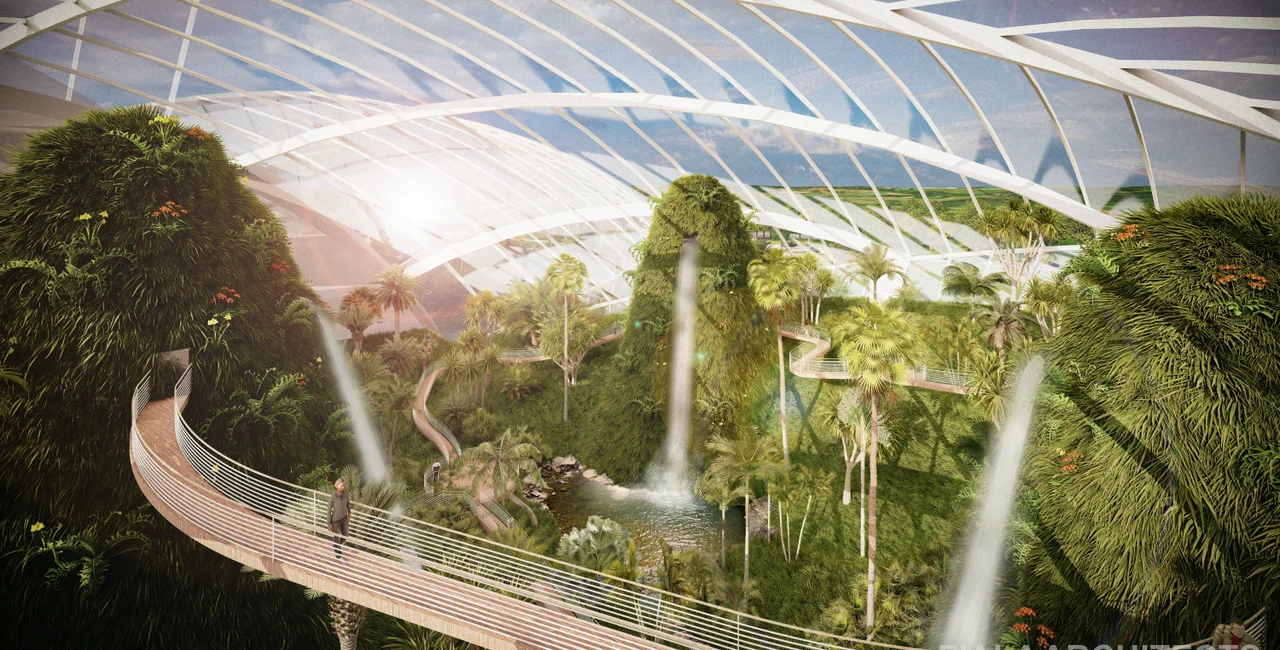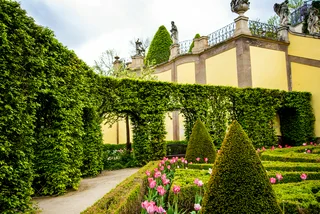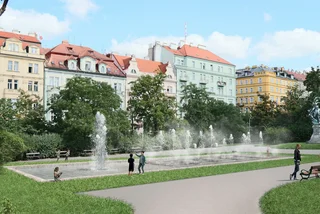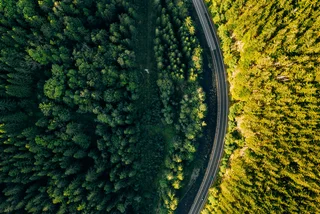Large greenhouses that will simulate different climate conditions could be built in a former coal mining area of the Czech Republic. The Eden Silesia project would be an educational, scientific, and research park and a tourist attraction.
The Moravia-Silesia region is carrying out a feasibility study to see if it is practical to build the greenhouses in the area of the former Barbora mine in the Moravia-Silesia district. The study itself will take six months to complete, representatives of Eden Project International, Moravia-Silesia Region, and the Silesian University have said. If the project moves forward, it could open in 2027.
The total cost of the project, if built, is estimated at CZK 2.4 billion. Nearly the whole project could be financed from the EU funds earmarked for transition into a carbon-neutral economy.
Eden Silesia is inspired by the original Eden Project, which was created at a former clay mine in Cornwall in the UK. Two greenhouses, simulating a rain forest and a Mediterranean environment, opened in 2001 and have since become a big boost for the economy of the area.
The administration of the Moravia-Silesia region hopes similar greenhouses in the Karviná district, which has the highest unemployment in the Czech Republic, will have a similar effect.
“We cannot just cover and demolish closed mines. We should see the potential in them and try to use it meaningfully,” Moravia-Silesia Governor Ivo Vondrák said in a press release.
Tomáš Gongol, vice rector of the Silesian University in Opava, said the university is already creating a team to work on Eden Silesia. The tropical greenhouses could focus on new ways of growing and on sustainable development. Gongol said that the conditions at the Karviná mine are similar to those where other Eden projects have been created.
“The Eden project basically succeeded in making these places interesting places, attractive places for tourism, for spending free time. And also for science and research. This is what the Silesian University has taken up, and we see the whole project as an educational and scientific research park, a kind of living laboratory where we also want to invite the public to peek under the hands of scientists and students,” Gongol said.
Eden Silesia would be part of a global network. David Harland, CEO of Eden Project International, said the group is working on 23 projects around the world. “The Eden project in Karviná is very important to us because it is in Central Europe and we expect it to be one of the top five locations,” he said.
“Here we have exactly the right ingredients to make the project a success. We have great partners, a unique location, one of the best I have ever seen in the whole world. And we have a great story about the nature around it. We're really looking forward to it,” he added.
Karviná Deputy Mayor Lukáš Raszyk said the town would build infrastructure, cycling routes, and a bus connection between Karviná and Eden. He added that the project would improve the town’s image.
While this greenhouse project looks to the future, another one already underway in Brno, South Moravia, looks to the past. A steel and glass greenhouse is being built on the site where Gregor Mendel conducted his experiments that led to modern genetics.
Construction began in February at the Augustinian abbey where Mendel was a monk in the 19th century. The CZK 38 million greenhouse, which will be used for research and education, should be finished by the end of the year. This is the 200th anniversary of Mendel’s birth on July 20, 1822.
You don’t have to wait to see greenhouses. Prague has two that are easily reachable. The Fata Morgana is part of the Prague Botanical Garden, located next to Prague Zoo. There is also the Botanical Garden of Charles University, located in Prague 2 at Na Slupi 16.
There are also numerous gardens in and near Prague, which will soon be going into bloom. Prague Castle will open its gardens and part of its moat to the public on April 1. Admission to these gardens, which are overseen by the Prague Castle Administration, is free. The restored gardens under Prague Castle, overseen by the National Heritage Institute (NPÚ) require an admission fee.
The Wallenstein Gardens, part of the Czech Senate complex, are also slated to open to the public on April 1, after the winter break. It is the second-largest garden in Prague’s city canter, after the ones at the Castle. The garden is filled with statues, a fountain, and a replica stalactite wall. Entry to the garden is free.
Prague is filled with many more parks and gardens that are open to the public for free, and you can read about some of them here.
Just outside of Prague you can find Průhonice Park, which is part of Prague’s UNESCO World Heritage Site. The flower-filled park is open daily and has three different routes to follow. Admission is required.
Perhaps the most impressive garden in the country is one at the Archbishop's Chateau in Kroměříž. The garden, which also has a greenhouse, is a UNESCO World Heritage Site. Admission is required.












 Reading time: 4 minutes
Reading time: 4 minutes 
































